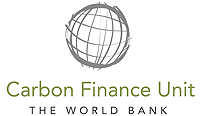Overview
This A/R Clean Development Mechanism (CDM) project activity consisted of reforestation of 3 137,32 ha of land traditionally devoted to extensive cattle grazing in the North of Colombia, department of Magdalena, in six municipalities located along the Magdalena River. This area of the country is part of the Llanuras Secas del Caribe, sub-region Colombian Caribbean savannas, a region that has been determined as a strategic ecological area by the Government of Colombia due to its tendency of desertification as a consequence of deforestation.
Deforestation was previously the traditional economic activity of “farmers without land”, who were renting their work force to stockbreeders in the aim to extend cattle grazing activities. Traditional extensive cattle ranching has been so far the dominant agricultural activity. Nowadays, deforestation is almost complete; currently, only about 10% of the initial Caribbean forest remains, which is equivalent to 7,699 hectares, that represents 0.007% of the area of Colombia. This large-scale deforestation of the area decades ago has dramatically increased the threat of desertification due to the dry climate, with the aggravation that the department of Magdalena is the third department with the largest area in the process of desertification in Colombia.
Consequently, increasing environmental and social issues spurred by on one hand, deforestation that has affected very negatively on soils erosion, in particular over the major Colombian river watershed, the basin of the Magdalena and on the other hand, the very low productivity of traditional cattle ranching and the quasi absence of alternatives to such an activity along with the natural increase of demography, led to a worrying social situation with important risks for the region, followed into a spiral of violence.
The reforestation project in Magdalena Bajo has aimed at stopping and reversing this situation through:
- The most optimal use of the land traditionally devoted to extensive livestock in the Magdalena Bajo, through higher cattle densities per surface unit in order to release areas for the establishment of commercial forest stands. Thus, the local economy, based on cattle grazing activities, was going to be hardly affected and was expected to generate additional income from forest activities. This principle is to avoid potential leakage from the displacement of cattle by maintaining the same number of animals respect to the reference scenario.
- The reforestation on private lands dedicated to extensive cattle grazing activities, located on municipalities along the Magdalena River margin. The reforestation program of which 3,137.32ha were under the A/R Clean Development Mechanism (CDM) project activities has been implemented as:
- Single plantations of Gmelina arborea, with 2,3806 ha under A/R Clean Development Mechanism (CDM) project activities;
- Single plantations of Tectona grandis, with 225.6 ha under A/R Clean Development Mechanism (CDM) project activities;
- Single plantations of Bombacopsis quinata, with 320.4 ha under A/R Clean Development Mechanism (CDM) project activities;
- Single plantations of Tabebuia rosea, with 165.7 ha under A/R Clean Development Mechanism (CDM) project activities;
- Single plantations of Eucalyptus tereticornis, with 45.7 ha under A/R Clean Development Mechanism (CDM) project activities.
Benefits
The A/R Clean Development Mechanism (CDM) activity has resulted in several important contributions to the sustainable development of the region:
- Reforestation of lands dedicated to extensive cattle grazing activities, on municipalities along the Magdalena River margin, which has reduced soil erosion and its related negative impacts;
- Reduction of pressure on the exploitation of natural forest by generating a long-term source for the supply of primary material for the forest industry of the country;
- Contribution to reduction of the risk for desertification of the region;
- Contribution to preservation of biodiversity and improvement of the hydrological cycle;
- Contribution to climate change mitigation;
- Demonstration of the technical and financial viability of reforestation activities, considering the absence of such activity in the area at the beginning of this A/R Clean Development Mechanism (CDM) project;
- Diversification of incomes for small-scale farmers from the sale of tCERs and timber, as well as by contracting them as labor for forest operations;
- Substantial creation of jobs for the establishment and maintenance of forest plantations;
- Transfer of technical knowledge and capacity building at the local level regarding plantation establishment and management;
- Contribution to equilibrate the wood sector balance at the national level.
The project has generated incomes from timber sale, and tCERs from the net anthropogenic greenhouse gas removals by sinks of the proposed project activity over a 30-year crediting period.
